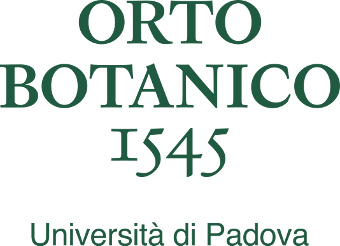Plants and Humankind
Source of sustenance and remedy to treat illness; means of alleviating fatigue and “simple” material (to make clothes, objects, ornaments, musical instruments and writing implements), but also myth and religious symbol – these are plants in their daily relationship with man.

The Biodiversity Garden tells their stories. Here are some examples present in the Botanical Garden.
Coffea arabica
The coffee plant was described for the first time in Italy by Prospero Alpini, physician and then prefect of the Botanical Garden. In his De plantis Aegypti from 1592, written after a long adventurous voyage in Africa, he talks of the therapeutic uses of the drink obtained from its toasted seeds. It is the prelude to the arrival of coffee in the West, brought by the Venetians during the 16th and 17th centuries. It immediately spread widely and was cultivated everywhere the climate permitted. The Dutch took coffee to Java (1699) and Guyana (1714). It did not arrive in Brazil until 1727, but the country then became the world’s greatest producer.
Ravenala madagascariensis
Despite its name, the “Traveller’s Palm”, national symbol of Madagascar, is in fact not a palm. Its name is linked to the travellers who drank the water accumulated by its imposing leaves. It was also used in traditional building - the leaves were used as a roof covering, the large leaf stalks to make dividing walls in the local houses and the bark as a flooring material. It is also used for its fibre and as a food. A sugary substance is obtained from the lymph from its trunk and its edible seeds contain a food oil, halfway between palm oil and cocoa butter. Finally, the pith is used as animal feed. The species is also of great ornamental interest, thanks to its shape, similar to a large open fan.
Cycas circinalis
This plant originates in a limited area of south India, in the Karnataka, Kerala and Tamil Nadu states. Gathering of Cycas leaves for floriculture and felling to extract the pith from the trunk (eaten by the local population) has led to deforestation which has destroyed more than 50% of its original habitat in just over fifty years. As a result, in 2009 Cycas circinalis entered the International Union for the Conservation of Nature’s Red List as an at risk species.
Theobroma cacao
Theobroma means “food of the gods”, confirmation of the elitist connotations of its early use as a food. The properties of cocoa were certainly known more than two thousand years ago among the native populations of the tropical rain forests of central and south America where the species grows wild. Some studies have shown the existence of cocoa residues in drinking containers found in Honduras and datable from 1150 B.C.. As shown by archaeological finds, chocolate consumption among the Mayas must have been reserved for the nobility and special occasions. It seems that Aztecs on the other hand used to prepare a bitter drink consumed cold and considered aphrodisiac. It contained various ingredients such as maize and cocoa seeds, water, red chilli pepper and other spices including vanilla. Cocoa was considered so precious that until the 19th century, its seeds were also used as money.
Mangifera indica
This large evergreen tree can grow to a height of up to 30-40 m and its foliage can reach a circumference of 10 metres. It is one of about 50 species of the Mangifera genus which grow in various parts of south east Asia. About half of these, including M. indica, have edible fruit which are widely used by the local populations. The mango is considered the national fruit of India, Pakistan and the Philippines and, according to FAO figures, Mangifera indica is the sixth most important fruit species in the world, with production amounting to 26 million tons per year. But the ancient roots of its use by man also include numerous religious and symbolic meanings in the popular Indian culture.
Succulent plants
Even in arid environments, there are close links between the human and plant communities. The latter have developed a particular adaptation to the environment, characterised by scarce surface development with cylindrical or spherical forms and an absence of leaves. They absorb water rapidly when available and give it up slowly as it is consumed for the plant’s metabolic processes. In parallel, over time, the human populations living in desert environments have learnt to use the scarce plant resources available to best advantage. The historic collections of succulent plants in the Botanical Garden trace the web of these relationships and keep their memory.
Carnegiea gigantea. This plant in the Cactaceae family can reach a considerable size. It lives wild in the desert of Sonora which extends over a vast area of the Mexican region with the same name, Arizona and California. It reaches reproductive maturity after 30 to 35 years and a 50 to 70 year old individual can produce as many as 100 fruits in a season. The native populations eat the fruit and have developed various procedures to preserve it and the seeds as long as possible as dried fruit or syrup. The seeds are used dry and ground to obtain a flour for use to make flatbread. The seasonal harvesting of the Carnegiea fruit takes place with various rituals and methods and the links between this plant and the native populations are so strong that the calendar of the local people, the Tohono O’odham, follows the growth stages and ripening of the fruit month by month. An example of the medicinal use of succulent plants is, on the other hand, the Aloeacea family, including Aloe vera and Aloe arborescens. Used in ancient times as a cicatrising and soothing agent, they are today at the focus of renewed interest from medical science which is experimenting with their use to produce anti-tumour drugs.






